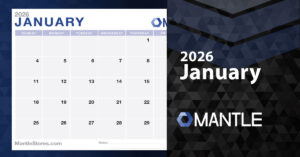Delving into Inventory Data
Inventory data in a game store encompasses more than just a list of items on the shelves. It’s a comprehensive view of what products you have, their quantities, how quickly they’re being sold, and when they need replenishing. This data serves as the backbone for managing the physical (or digital) products that your store offers. It’s about finding the sweet spot between having enough of what your customers want, when they want it, and avoiding the pitfalls of over-investment in unsold stock. Having too much inventory is equally a problem as not having enough inventory.
The Why: Navigating the Inventory Maze
The essence of effective inventory management lies in mitigating two major risks: overstocking and understocking. Overstocking, or having too much inventory, ties up your capital in products that aren’t moving. This not only leads to cash flow issues but also increases storage costs and risks inventory becoming outdated, especially in the fast-paced gaming industry. On the other hand, understocking, or having too little inventory, results in stock outs where you miss out on sales because popular items are unavailable. This can disappoint customers and hurt your store’s reputation. Both problems can lead to the end of a business if not handled properly. That is one of the reasons why 20% of small business owners fail in their first year. According to Forbes, about 50% due to lack of market demand, and 38% due to running out of capital aka money.
Actionable Insights
Demand Forecasting: Analyze past sales trends to predict future demand for different products. This helps in ordering the right quantities and avoiding overstocking. For example, if certain titles consistently sell out, increase your orders for these items, while scaling back on slower-moving stock. Knowing an estimate of how many units of a product should sell over a period of time helps you keep just enough inventory as to not tie up your capital while maximizing the profit potential you can have.
Inventory Turnover: Keep track of how often your inventory is sold and replaced over a given period. A high turnover rate typically indicates strong sales, whereas a low turnover might suggest overstocking. The inventory turnover equation is
Inventory Turnover Ratio = (Cost of Goods Sold)/(Average Inventory)
Having a strong turnover ratio is good except if you keep running out of inventory.
Seasonal and Quarterly Adjustments: The gaming industry is subject to seasonal and quarterly fluctuations. Look for these changes by adjusting your inventory levels accordingly. For instance, stock up on popular gaming titles, consoles, and accessories during holiday seasons or in anticipation of major game releases. Things like Magic the Gathering, Pokémon, Yu-Gi-Oh tend to have a pretty set schedule of releases, albeit a more frequent release schedule as opposed to the past, all of these companies tend to announce the titles of the releases and a rough release time months ahead. This gives you plenty of time to plan accordingly.
Supplier Relationships: Develop good relationships with suppliers for flexible inventory management. This might include negotiating better terms, such as return policies for unsold inventory, or faster delivery times to respond quickly to unexpected demand. There are a lot of things that can be done to foster a better relationship with suppliers. Keep your word. When you commit to an order, don’t cancel anything you have pre-ordered. Pay your bills. The days of net terms are almost non-existent after Covid-19, if you have spent the time and built a relationship with a supplier and still have terms, be sure to pay them early or on time.
Technology Integration: Utilize inventory management software (Like Mantle) for real-time tracking and automated reordering systems (coming soon in Mantle). This technology can alert you when stock levels are low or when it’s time to reorder, ensuring you’re always equipped to meet customer demand. Knowing when you are low and ordering before you run out is a best case scenario. A perfect world would have you received and ready to shelf product just as the previous order is walking out the front door.
Regular Audits: Conduct regular physical counts of inventory to ensure data accuracy. Discrepancies between what’s recorded and what’s actually in stock can lead to not a great time. Talk to your accountant about the minimum tax requirements needed for you. Inventory generally needs to be done once per year for tax purposes. You also may want to look every six months for products you know move slower so you can keep a closer eye on them. Clearance or new promotion on them to help shine light on them to make them wanted by your customers.
Data-Driven Decisions: Combine inventory data with sales trends for informed decision-making. For instance, if black standard sized sleeves are trending in sales data but your inventory levels are low, it’s a signal to restock them promptly from your distributor. Placing an order before you run out of stock is the best way to make sure you keep you keep your potential profit margin realized.
Conclusion
In conclusion, mastering inventory data is about creating a balance of your store’s operations. It’s not just about reacting to stock levels; it’s about proactively managing your product range to align with customer demand, seasonal trends, and market trends. Remember, efficient inventory management can significantly enhance customer satisfaction and, ultimately, the profitability of your business.
Keep in mind that no system is perfect and you can never truly know how much product is needed on hand at any given point. The publisher may work with a highly popular social media influencer and a sudden craze on a specific product happens, see the Pink Stanley Cup. With the right information, tools, and a little bit of planning, you’ll be able to keep the products you are selling in stock at all times.






